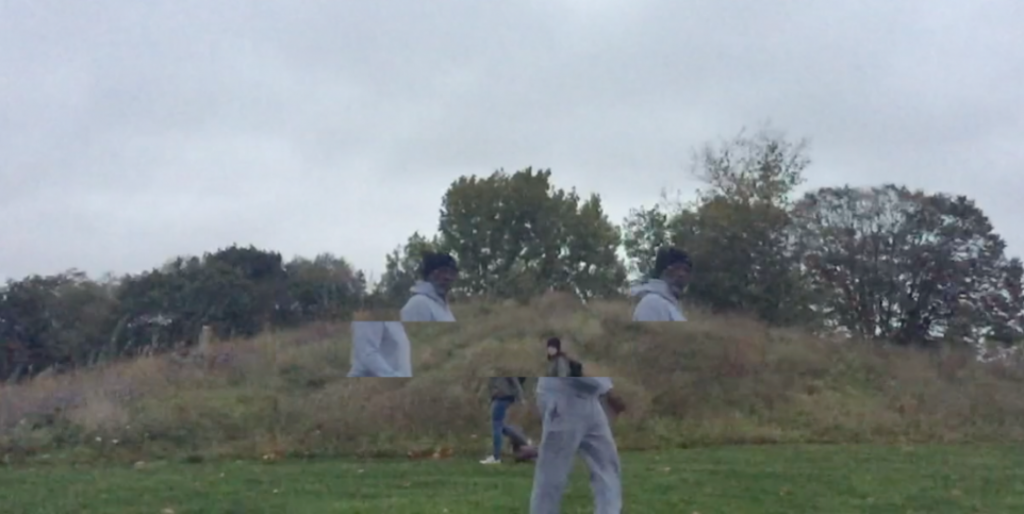Recently I’ve started to come back to weaving as a form of abstracting imagery. I like how little control it allows as a form of collage, how the whole of each image is present yet only 50% is visible. I suppose it ties into the idea of simultaneity that I’m looking at currently: just because I can’t see everything that’s happening in the world right now doesn’t mean it’s not happening, similar to the hidden 50% of a woven image.
I’m currently reading ‘The Aesthetics of Disappearance’ by Paul Virile (1). There’s a passage near the beginning of the book that touches on a similar subject, as shown below (starting at the line “Children are the most…”):

This idea of ‘patching up’ gaps in knowledge with experiences that we ourselves have observed; making mental assumptions and links in place of a knowledge that we will never possess, is something that is inherently human and vital in order to make sense of the world. It also applies to the viewing of imagery, particularly the abstract.
With this idea in mind, I scanned in a simple weaving (shown below) I had made out of 3 separate stills from the same wrestling video, weaving alternate strips from image 1 and 2 into image 3.

I then re-scanned this in and dissected it into the 350 separate squares that it’s now comprised of, creating 350 stand-alone compositions, each with their own individual potential of a narrative, a scene, a context.






When separated, these fragments become their own works, ranging from figurative to abstract. Like the Young Picnoleptic from the passage above, we use our own experiences and paste them onto new ones, ‘stretching our memories’ in doing so.
On a side note, it’s interesting how in blowing up the result of a physical paper weaving, the pixels of the image make a kind of woven aesthetic in their own right. I haven;t decided what to do with these 350 images, but this is something that I want to play with, perhaps using more physical processes such as embroidery to make a pastiche of this familiar digital aesthetic that’s so close in looks to the physical process from which it was derived.
(1) Virillo, P. (2008) The Aesthetics of Disappearance, Los Angeles: Semiotexte
